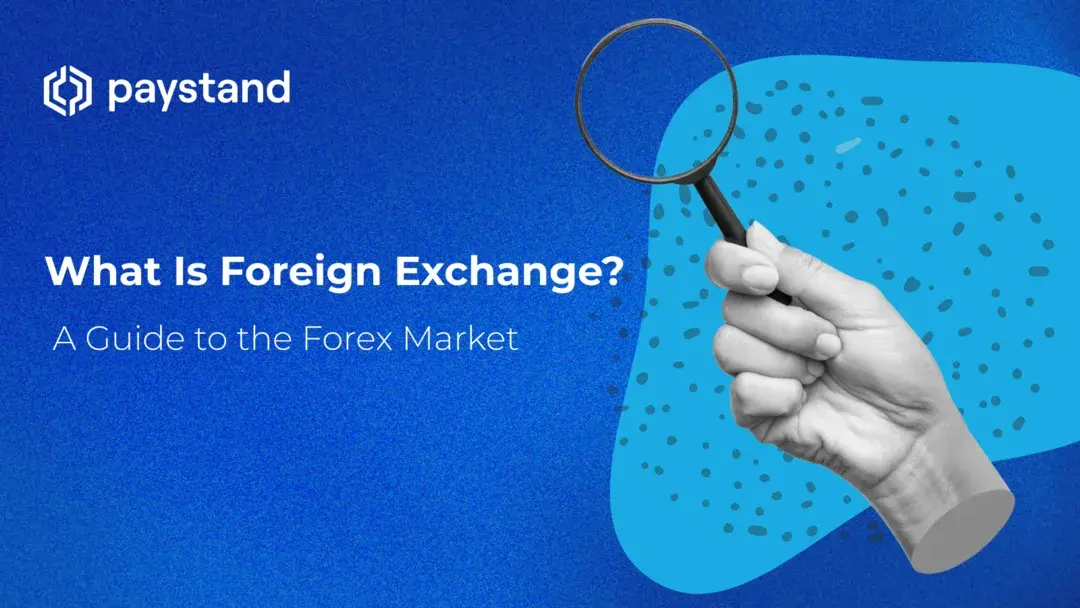What Is Foreign Exchange? A Guide to the Forex Market

Table of Contents
- What is Foreign Exchange?
- What is the Foreign Exchange Market?
- What Are the Factors that Impact Foreign Exchange Rates?
- What Are Foreign Exchange Reserves?
- Leverage Forex for Future-Ready Financial Business Management
Key Takeaways
- The foreign exchange (forex) market handles over $6.6 trillion in daily trades, driven by economic, political, and market factors.
- Forex involves converting currencies for international trade, travel, and investments, with USD as the most commonly traded currency.
- Key forex market participants include banks, investment firms, hedge funds, and central banks, with market makers leading the major activity.
- Forex trading involves risks such as currency fluctuations and leverage, which are regulated to ensure market integrity and investor protection.
- Exchange rates fluctuate based on economic growth, inflation, interest rates, political stability, and supply-demand dynamics.
- Central banks hold foreign exchange reserves to stabilize economies, manage debts, and support international trade.
- Understanding forex fundamentals can support strategic business financial management and resilience in global finance.
Forex, or foreign exchange, is a global marketplace buzzing with over $6.6 trillion daily trades. Beyond its sheer scale, forex represents intricate currency movements driven by national economies, market sentiment, and geopolitical shifts. Far from being a routine business function, foreign exchange offers pathways for companies to hedge risks, investors to diversify portfolios, and travelers to secure local currencies—all while keeping an eye on exchange rates that never stop changing.
This guide will explain the essentials of the forex market and its broader implications for financial business management. Join us as we explore this influential, fast-paced landscape and discover how strategic forex can sharpen your business financial management for global success.
What is Foreign Exchange?
Foreign exchange, also known as forex or FX, is exchanging one currency for another. It involves converting money from one country into another country's currency for various purposes, such as international trade, travel, and investments. It is handled globally among different banks, and all transactions are handled by the Bank for International Settlements (BIS).
What Is the Most Common Foreign Exchange?
The USD is used in international trade and finance and is the currency of choice for many central banks. In addition, several other major currencies are commonly traded in the foreign exchange market:
- Euro (EUR)
- Japanese yen (JPY)
- British pound sterling (GBP)
- Swiss franc (CHF)
What Is a Simple Example of Foreign Exchange?
Imagine you're traveling to Europe. You must exchange US dollars for euros for this trip. The exchange rate will determine how many euros you'll receive, which you can calculate by multiplying your dollar amount by the exchange rate. For instance, with an exchange rate of 1 euro = 1.2 US dollars, exchanging 100 US dollars will give you 120 euros.
What is the Foreign Exchange Market?
The Foreign Exchange Market (Forex or FX) is a decentralized global currency-trade marketplace. It is the world's largest and most liquid financial market, with a daily trading volume exceeding $6.6 trillion. It operates 24 hours a day, 5 days a week, following the sun from one financial center to the next.
Participants in the Forex market include banks, investment firms, hedge funds, retail traders, and central banks. However, most trading activity is conducted by a few large financial institutions, known as market makers, who provide liquidity and set the bid-ask prices.
Some key aspects of the foreign exchange market are:
- Currency pairs: In forex trading, currencies are traded in pairs, representing the exchange rate between the base and quote currencies.
- Exchange rates: These determine the currency value needed to purchase another currency. These rates fluctuate due to economic, political, and market factors.
- Spot and forward markets: The foreign exchange market comprises spot (immediate exchange at the current rate) and forward (exchange at a predetermined rate for a future date) markets.
- Trading platforms: Foreign exchange trading is done electronically via platforms provided by banks, brokers, and online services. These platforms enable traders to access market data, place orders, and monitor positions.
- Risks: Forex trading involves risks such as currency fluctuations and leverage, which can amplify profits and losses.
- Regulation: Global financial authorities regulate the forex market to safeguard integrity and protect investors. Regulations may include licensing, capital requirements, and risk management practices.
What Are the Factors that Impact Foreign Exchange Rates?
The foreign exchange rates of currencies constantly fluctuate, and several factors can affect these rates. These factors include:
- Economic growth: Strong economic growth leads to currency appreciation due to increased foreign investment, low unemployment, and high wages, which raise the demand for imported goods and services.
- Inflation: High inflation causes currency depreciation due to value erosion and higher interest rates.
- Interest rates: High interest rates strengthen a country's currency, attracting foreign investors and increasing demand.
- Political stability: Political instability depreciates currencies by causing economic uncertainty, discouraging investment, and increasing inflation.
- Supply and demand: Higher demand than supply leads to currency appreciation.
These are just some of the factors that can affect foreign exchange rates. The relative importance of each factor will vary depending on the specific circumstances.
What Are Foreign Exchange Reserves?
Foreign exchange reserves, held by central banks, are assets that influence currency exchange rates, manage the balance of payments, and mitigate external financial shocks. These reserves comprise foreign currencies, gold, Special Drawing Rights (SDRs), bonds, and securities.
Central banks use these reserves to stabilize exchange rates, finance imports, manage external debt, and boost investor confidence. Adequate foreign exchange reserves promote international trade, attract foreign investment, and smooth a country's financial system, contributing to overall economic stability and resilience.
Leverage Forex for Future-Ready Financial Business Management
Navigating the world of foreign exchange can be transformative for those aiming to elevate their financial business management practices. From the fundamentals of currency trading to the strategic use of foreign exchange reserves, understanding these concepts can empower you to make informed, resilient financial decisions on a global scale.
Paystand can be a valuable partner in unlocking these advantages with insights and tools to support your forex strategy and broader financial goals.
To continue exploring this critical topic and equip yourself with actionable strategies for the future, download our comprehensive ebook, The Future of Finance in 2025, and prepare to enhance your financial management capabilities.





